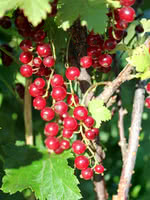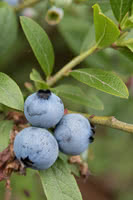Mon-Fri 9am - 5pm Mountain time
Red Currant vs Lowbush Blueberry
Ribes rubrum
Vaccinium angustifolium
NOT AVAILABLE THIS SEASON - MIGHT RETURN
Red Currant is a deciduous shrub native to western Europe. It features five-lobed, maple-like leaves, and bright red berries that can be used in jams, sauces, and fresh eating.
Although this shrub is self-fertile, it will be more productive if another pollinator is present. For year over year high yields, ensure you fertilize (bone meal), prune, and mulch your Red Currant shrub.
Lowbush Blueberry, commonly known as the Wild Lowbush Blueberry, is often wild-harvested and thrives in low pH acidic soil. This early low-bush blueberry produces white and pink bell-shaped flowers in the spring. Its fruit is smaller in size than high bush blueberry plants and is more flavourful with an intense blueberry taste-masking it perfect for fresh eating, baking, and preserves.
Note: Blueberries require very specific soil conditions. They need well-drained soil with a pH between 4.5 and 5.0. If the starting pH of your soil is between 5.1 and 6.2 you can lower it by adding sulfur. We recommend against planting blueberries in soil with a starting pH greater than 6.2. Please do your own research before buying any blueberry plants.

